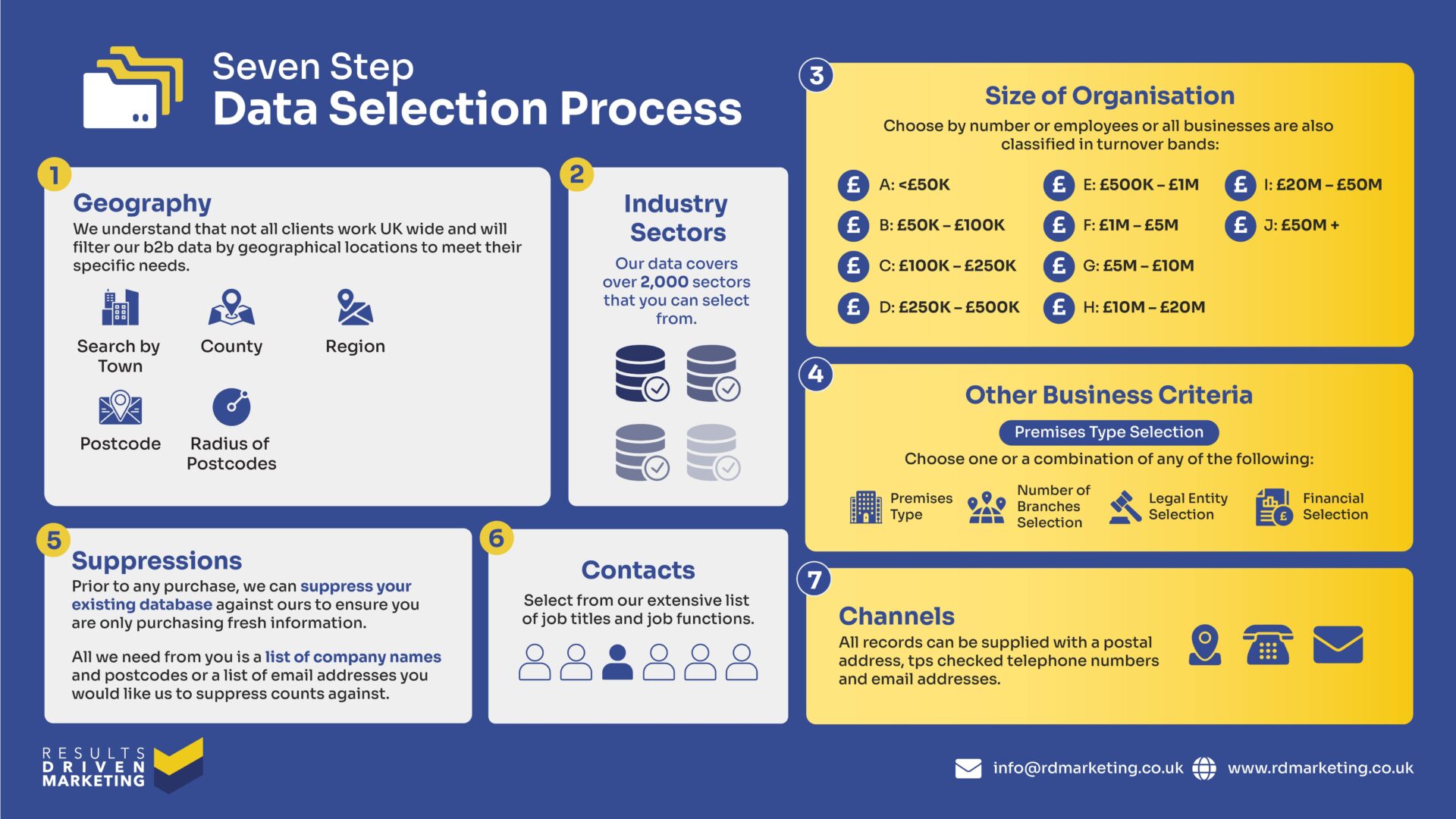
Email Marketing Analytics: What You Need to Know
Email Marketing Analytics have genuinely become more important than ever before. Right from the very first send, tracking and understanding your email campaigns isn’t just helpful, it’s absolutely essential if you’re serious about improving performance and maximising results.
So, what exactly are Email Marketing Analytics? Simply put, they’re the detailed insights and metrics that show you how well your email campaigns are performing. We’re talking about things like open rates, click-through rates, bounce rates, conversions, and so much more. These numbers, when properly analysed, can reveal exactly what’s working and, honestly, what’s not — giving you a clear path to improve your marketing game.
In this ultimate guide, we’re going to walk you through everything you need to know about Email Marketing Analytics. You’ll discover:
-
Practical, real-world insights to read your data like a pro
-
Handy tools to track and measure your success
-
Step-by-step techniques to optimise your campaigns for better engagement
-
And, of course, proven methods to boost your ROI and drive serious improvements in your overall campaign performance
But here’s the really exciting part — using data to enhance customer engagement isn’t just theory, it’s something you can action right away. With the right data, like accurate B2B Data or even precise Email Address List Data, you can directly target the right audience and see measurable results, faster.
And if you’re looking for an even more powerful edge, our Email Marketing Management Services can help you manage and analyse your campaigns end to end, saving you time and maximising efficiency at every step.
So, stick with us — because by the end of this guide, you’ll not only understand Email Marketing Analytics inside and out, but you’ll also know exactly how to use these insights to make every campaign better than the last.
Making Data Work for You
Data-driven decisions aren’t just about reacting to what’s already happened; they’re about proactively shaping your future campaigns.
With our CTPS checker and email marketing management services, for instance, we ensure that you’re not only reaching your target audience but also maintaining compliance and enhancing email deliverability.
So, if you’re ready to take your campaigns to the next level, consider how email marketing analytics can unlock a world of insights, driving results and maximising ROI.
With the right analytics in place, you’re equipped to not only meet your goals but to set new standards for performance and engagement.
Table of contents:
Core Metrics in Email Marketing Analytics
In the world of email marketing analytics, there are a few key metrics that help you understand how effective your email campaigns really are.
These metrics go beyond simple open and click numbers; they offer insights into engagement, interest, and even the potential areas for improvement within your campaigns. Let’s break down the core metrics and what each one indicates for your email strategy.
Open Rate
The open rate tells you the percentage of recipients who opened your email out of the total number sent. This is often the first metric marketers look at because it gives a quick indication of how well the subject line and preview text grabbed attention.
- What it Reveals: A high open rate shows that your audience finds your subject lines compelling or that your brand’s email has captured their curiosity. A low open rate, on the other hand, might indicate that the subject line was too vague, too spammy, or simply didn’t resonate with your audience.
- Factors Affecting Open Rate: Several elements can impact your open rates, such as the subject line, send time, and the sender’s name. Small tweaks here can often lead to noticeable improvements.
Using B2B data from reliable sources like RD Marketing, for example, can help target audiences with precision, ensuring your message reaches the right people who are more likely to open your emails.
Click-Through Rate (CTR)
The Click-Through Rate (CTR) is another essential email marketing analytics metric. This is the percentage of people who clicked on at least one link in your email, indicating active engagement with your content.
- What it Reveals: CTR helps you see how effective your calls-to-action (CTAs) are and whether recipients found the content within your email compelling enough to engage with further. A low CTR could indicate that your content didn’t align with subscriber interests, or your CTAs weren’t clear or enticing.
- Optimising CTR: To increase CTR, try placing CTAs in prominent spots, testing different button colors, or experimenting with persuasive language that nudges users to take action.
For better-targeted content, utilising email address list data from trusted providers like RD Marketing can align your message with the interests of your audience, potentially increasing engagement and CTR.
Bounce Rate
Bounce rate measures the percentage of emails that couldn’t be delivered. Bounces fall into two main categories:
- Hard Bounces: These occur when an email is undeliverable due to invalid addresses, like when an address is mistyped or no longer exists.
- Soft Bounces: These are temporary issues, such as a full inbox or a server problem on the recipient’s end.
- What it Reveals: A high bounce rate can indicate issues with your email list quality. Frequent hard bounces may signal that your list is outdated or sourced from unreliable data.
- Reducing Bounce Rate: To keep your bounce rate low, it’s crucial to maintain a clean email list. Regularly updating your list with data cleansing services from companies like RD Marketing can ensure your emails are reaching verified, active inboxes.
Conversion Rate
The conversion rate reflects the percentage of recipients who completed a desired action, like purchasing a product, signing up for an event, or downloading a resource, after clicking through an email.
- What it Reveals: Conversion rate measures the success of your email in driving valuable outcomes, making it one of the most critical indicators of email marketing ROI.
- Optimising Conversion Rate: High conversion rates can often be achieved through personalisation and targeting. Segmenting your audience using telemarketing data or consumer data from RD Marketing can help you deliver relevant offers that resonate, boosting conversions.
Unsubscribe Rate
The unsubscribe rate is the percentage of recipients who choose to opt out of receiving further emails from you. While it’s natural for some users to unsubscribe over time, a consistently high unsubscribe rate could signal a larger issue.
- What it Reveals: If people are unsubscribing, it might indicate that they’re not finding your content valuable or relevant. It’s a cue to reassess your content strategy or consider better audience segmentation.
- Reducing Unsubscribes: To keep unsubscribes low, consider adjusting your frequency or focusing on high-quality, engaging content that’s personalised for the reader. If you’re targeting internationally, ensuring you have the right international email list from RD Marketing can also be crucial to engaging global audiences.
Spam Complaints
Spam complaints occur when a recipient marks your email as spam. This is not only bad for engagement but also negatively impacts your sender reputation with email service providers.
- What it Reveals: High spam complaints can mean your emails are perceived as irrelevant, overly frequent, or even misleading. It’s a serious signal that your email practices might need an overhaul.
- Preventing Spam Complaints: Ensure subscribers actually opted in, and keep your list clean using tools like the CTPS checker from RD Marketing to verify your contact list. Creating clear, honest subject lines and avoiding overly aggressive language can also help lower spam complaints.
Understanding and actively managing these core metrics in email marketing analytics is crucial. These metrics don’t just represent numbers—they tell a story about your audience, engagement levels, and overall effectiveness of your email strategy.
By focusing on these areas, you’ll be better equipped to make strategic adjustments that enhance your email campaigns and drive meaningful results.
Advanced Metrics to Track for In-Depth Insights
While core metrics like open rates and click-through rates are foundational to understanding your email performance, diving deeper into advanced email marketing analytics metrics can provide invaluable insights for optimising and refining your campaigns.
These metrics go beyond the basics, revealing subtle nuances in audience behavior that can drive more sophisticated strategies.
List Growth Rate
The list growth rate is an essential metric in email marketing analytics that measures how quickly your subscriber list is expanding (or shrinking) over time.
Tracking your list growth rate offers insights into your audience’s interest level and engagement, and it reflects the effectiveness of your acquisition strategies.
- How to Calculate It: List growth rate is calculated by subtracting unsubscribes and spam complaints from new subscribers, then dividing by the total number of subscribers.
- Why It Matters: A steady or growing list is a good indication that your audience finds value in your content. A stagnant or declining list, however, might suggest that your messaging, frequency, or content needs to be adjusted.
- Tips for Boosting List Growth: Optimising your acquisition tactics—like using targeted B2B data from RD Marketing—can help you reach audiences more likely to subscribe and engage with your emails.
Forwarding/Share Rate
The forwarding or share rate reveals how often your emails are being shared with others, whether through forwarding to a friend or sharing on social media. \
This metric highlights your emails’ viral potential, as it tracks organic reach outside your direct mailing list.
- What It Reveals: High share rates indicate that your content resonates enough for readers to share it with their network, which can organically expand your reach.
- Optimising for Shareability: Encourage readers to share valuable content by including social sharing buttons or forwarding options within your email design. Make sure that your emails have high-quality, insightful content that recipients feel compelled to pass on.
If your emails contain industry insights or data that others may find useful, utilising data enrichment services from RD Marketing can enhance the depth of information you share, potentially increasing share rates.
Device/Browser Usage
Understanding device and browser usage is critical for optimising the user experience. This metric shows the devices, operating systems, and browsers your audience uses to read your emails.
With the rise in mobile usage, it’s vital to ensure your emails are visually appealing and functional across all platforms.
- What It Reveals: Device and browser data give insights into how users interact with your emails, revealing preferences for mobile versus desktop and specific browser types. It helps identify the need for mobile-optimised designs or specific browser compatibility adjustments.
- How to Use This Data: If a significant portion of your audience reads emails on mobile, consider simplifying your design for smaller screens. Test email layouts on different devices and browsers to confirm consistent visual quality.
With email marketing management services from RD Marketing, optimising for mobile and desktop becomes seamless, ensuring your emails look great no matter where they’re opened.
Email Read Time
The email read time metric tracks how long recipients spend reading your emails. This metric offers an in-depth look at content engagement, showing whether your subscribers are skimming, reading fully, or exiting quickly.
- What It Reveals: Longer read times indicate that readers find your content engaging, while short read times suggest they may be losing interest or not finding value in the content.
- Optimising Read Time: To increase read times, focus on making your content relevant and captivating. Using direct mail data or consumer data from RD Marketing can help tailor your messaging to specific audiences, providing them with information that truly matters to them.
Shorter, engaging paragraphs, bold headings, and well-placed visuals can also improve readability, making it easier for users to digest your message.
Revenue Per Email Sent (RPE)
Finally, revenue per email sent (RPE) is a crucial metric for any revenue-focused campaign. This metric calculates the revenue generated by each email, allowing you to directly correlate email marketing efforts with sales results.
RPE is often a key indicator of how effective your campaigns are at driving revenue.
- How to Calculate It: Divide the total revenue from an email campaign by the number of emails sent. This gives a clear sense of the value each email delivers.
- What It Reveals: RPE allows you to gauge the financial effectiveness of your email campaigns. If your RPE is lower than expected, consider refining your targeting, offer, or messaging.
- Increasing RPE: Use segmented and targeted email lists, such as telemarketing data from RD Marketing, to deliver highly relevant offers. Additionally, incorporating personalisation based on user data can increase the likelihood of conversion, driving up your RPE.
Mastering these advanced email marketing analytics metrics provides a more comprehensive view of your audience’s behavior, preferences, and engagement levels.
By continuously monitoring and optimising these metrics, you can craft emails that resonate, engage, and ultimately drive higher revenue.
These advanced insights allow you to refine your strategy with precision, ensuring every email sent contributes meaningfully to your campaign goals.








